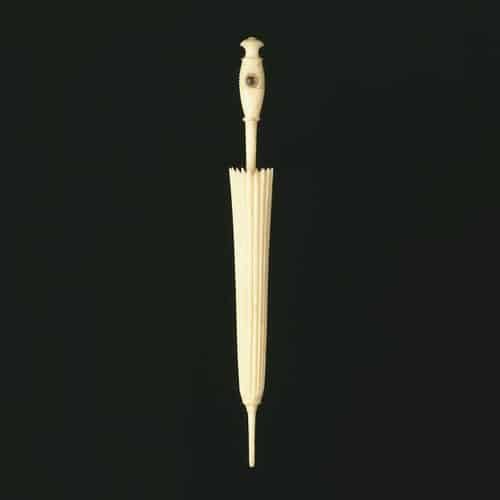
A Stanhope is a miniature convex lens, binocular or monocular, that can be used to view tiny photographic images. Victorian sentimental jewelry made use of this technology to add a new dimension to novelty jewelry. Popular images included loved ones, the Lord’s Prayer and views of historic places and popular destinations. Some were even designed for the purpose of disclosing risqué and sexually explicit images.
The idea evolved from a process invented by John Benjamin Dancer c.1839 that used a microscope lens on a daguerreotype camera to produce microphotographs. He eventually invented a wet plate process for printing these microphotographs onto glass slides. Rene Dagron (1819-1900), a Parisian portrait maker, used Dancer’s process to affix images to a miniature magnifying convex lens and implanted these tiny photographs and viewers in manufactured novelties, jewelry, and souvenirs. The translation of this use to novelty and souvenir objects was mistakenly named for the lens invented by Charles Stanhope, not for the actual lens used, a Codding Magnifier invented by Sir David Brewster.
Remaining a popular souvenir item throughout the Victorian era and on into the twentieth century, Dagron’s French factory continued to manufacture Stanhopes until 1972. Recently the fad has been revived and a more contemporary version of Stanhope Jewelry and novelty items are still available today.
Sources
- Vintage and Antique Stanhopes: (http://www.collectorsweekly.com/photographs/stanhopes) CollectorsWeekly.com. Accessed 6/29/15.
- What On Earth is a Stanhope? (http://americanhistory.si.edu/blog/2009/03/what-on-earth-is-a-stanhope.html) National Museum of American History, March 19, 2009, Smithsonian.com. Accessed 6/29/15.